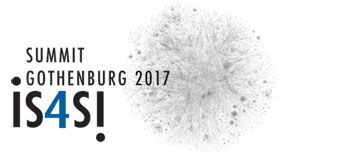MORPHOLOGICAL COMPUTING AND COGNITIVE AGENCY
TOPIC
Morphological computing, at its core, entails that the morphology (shape + material properties) of an agent (a living organism or a machine) both enables and constrains its possible physical and social interactions with the environment as well as its development, including its growth and reconfiguration. The role of such computation within cognitive systems includes the off-loading of control onto the body and its interaction with the environment thus enabling flexible and adaptive behavior (1-5). Within the morphological computing perspective, a process of self-structuring according to interactive constraints is considered critical to the emergence of process and function in cognitive systems across evolutionary and developmental timescales (6-9)
The nature of morphological computing has been investigated in a number of different frameworks, e.g. info-computationalism (where the world for an agent is an informational structure, which dynamics is natural computation). This approach is also called natural computationalism, when focus is on the type of computations, and all of nature is seen as a network of computational processes (10). Specific areas related to morphological computation have also been investigated within neuromorphological computing, embodiment and development, and social and affective interaction. (11).
CONFIRMED SPEAKERS
Lorenzo Magnani, University of Pavia, Italy
Marcin Miłkowski, Polish Academy of Sciences, Warsaw, Poland
Ron Chrisley, University of Sussex, UK
Jordi Vallverdú, Autonomous University of Barcelona, Spain
John Spencer, University of East Anglia, UK
Tom Ziemke, University of Skövde & Linköping University, Sweden
Erik Billing, University of Skövde, Sweden
SYMPOSIUM ORGANIZERS
Robert Lowe University of Skövde and Gothenburg University, Sweden
Gordana Dodig-Crnkovic Chalmers University of Technology and Mälardalen University, Sweden
Alexander Almér, University of Gothenburg, Sweden
REFERENCES
- Hauser, H and Füchslin. R.M. and Nakajima, K. “Morphological Computation – The Physical Body as Computational Resource”in e-book on “Opinions and Outlooks on Morphological Computation”, Chapter 20, ISBN 978-3-033-04515-6, 2014, – http://tinyurl.com/pjvey43
- Pfeifer, R. and Bongard J. “How the body shapes the way we think: a new view of intelligence”MIT press, 2006.
- Nakajima, Kohei, Helmut Hauser, Tao Li, and Rolf Pfeifer. “Information processing via physical soft body”Scientific Reports 5 (2015) Article number: 10487, doi:10.1038/srep10487 http://www.nature.com/srep/2015/150527/srep10487/full/srep10487.html
- Hauser, H.; Ijspeert, A.; Füchslin, R.; Pfeifer, R. & Maass, W.“Towards a theoretical foundation for morphological computation with compliant bodies” Biological Cybernetics, Springer Berlin / Heidelberg, 2011, 105, 355-370 http://www.springerlink.com/content/j236312507300638/
- McEvoy, M. A., and N. Correll. “Materials that couple sensing, actuation, computation, and communication.”Science6228 (2015): 1261689.
- Jablonka, E., & Lamb, M. (2005). Evolution in Four Dimensions: Genetic, Epigenetic, Behavioral, and Symbolic Variation in the History of Life. Cambridge, Massachusetts: MIT Press.
- Ginsburg, S., & Jablonka, E. (2009). Epigenetic learning in non-neural organisms. Journal of Biosciences,
- 34(4), 633–646.
- Jablonka, M.J. Lamb, Epigenetic Inheritance and Evolution, Oxford University Press, Oxford, 1995.
- Dodig-Crnkovic G., The Info-computational Nature of Morphological Computing, in Müller V. C. (ed.), Theory and Philosophy of Artificial Intelligence (SAPERE; Berlin: Springer), 2012. (Selected contributions from PT-AI conference @ACT) pp. 59-68
- http://sssa.bioroboticsinstitute.it/subarea/Neuromorphological



